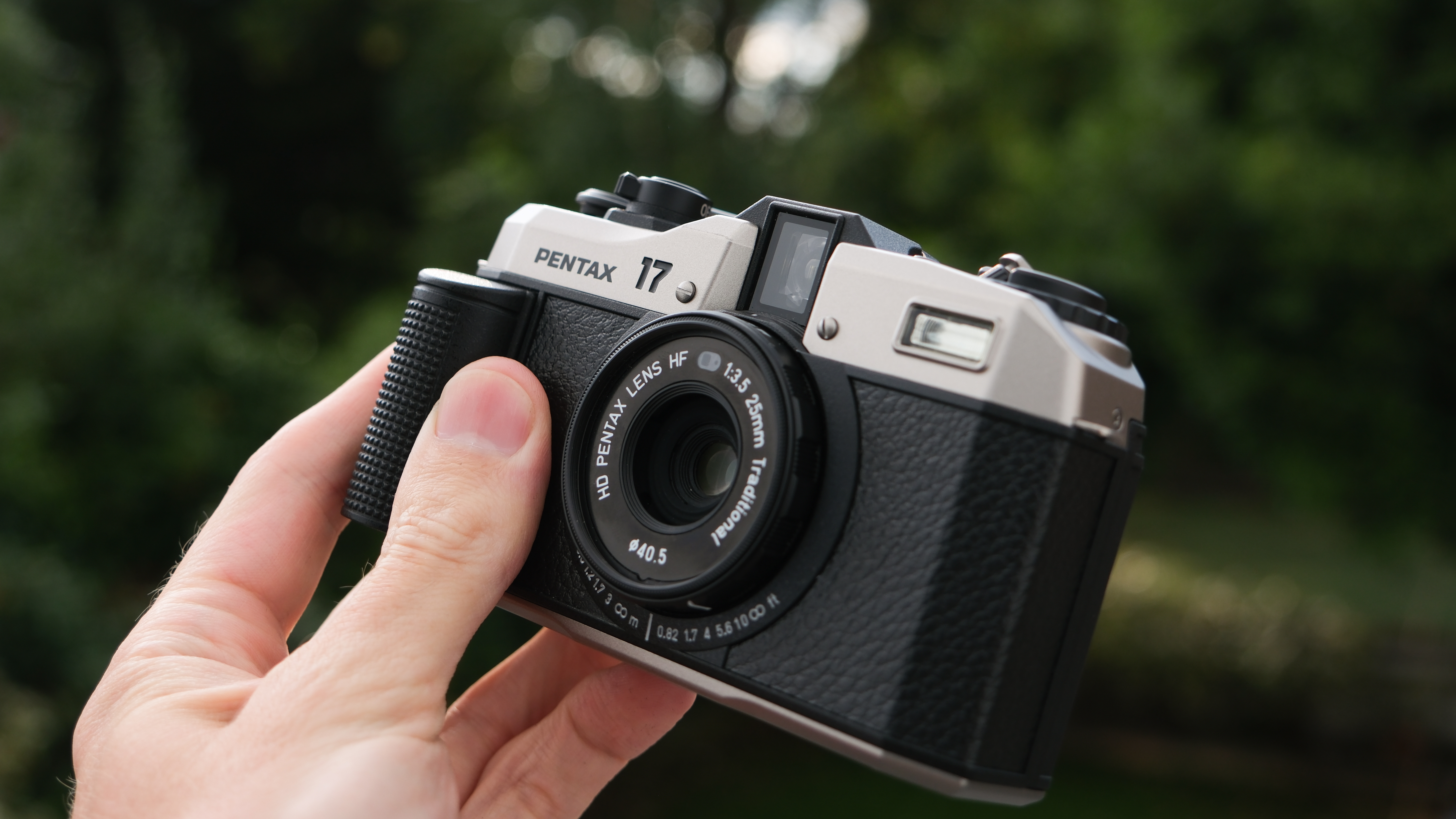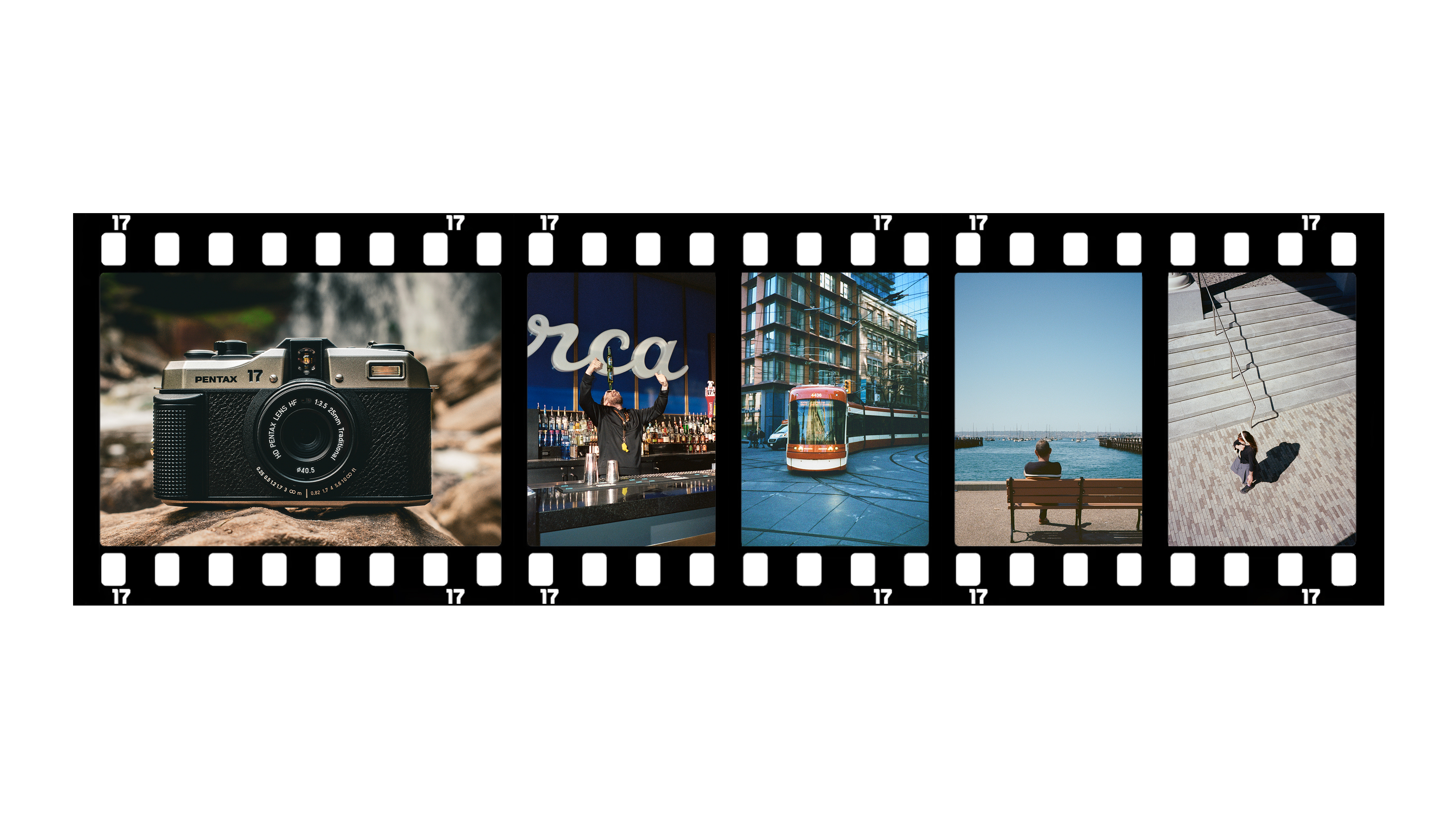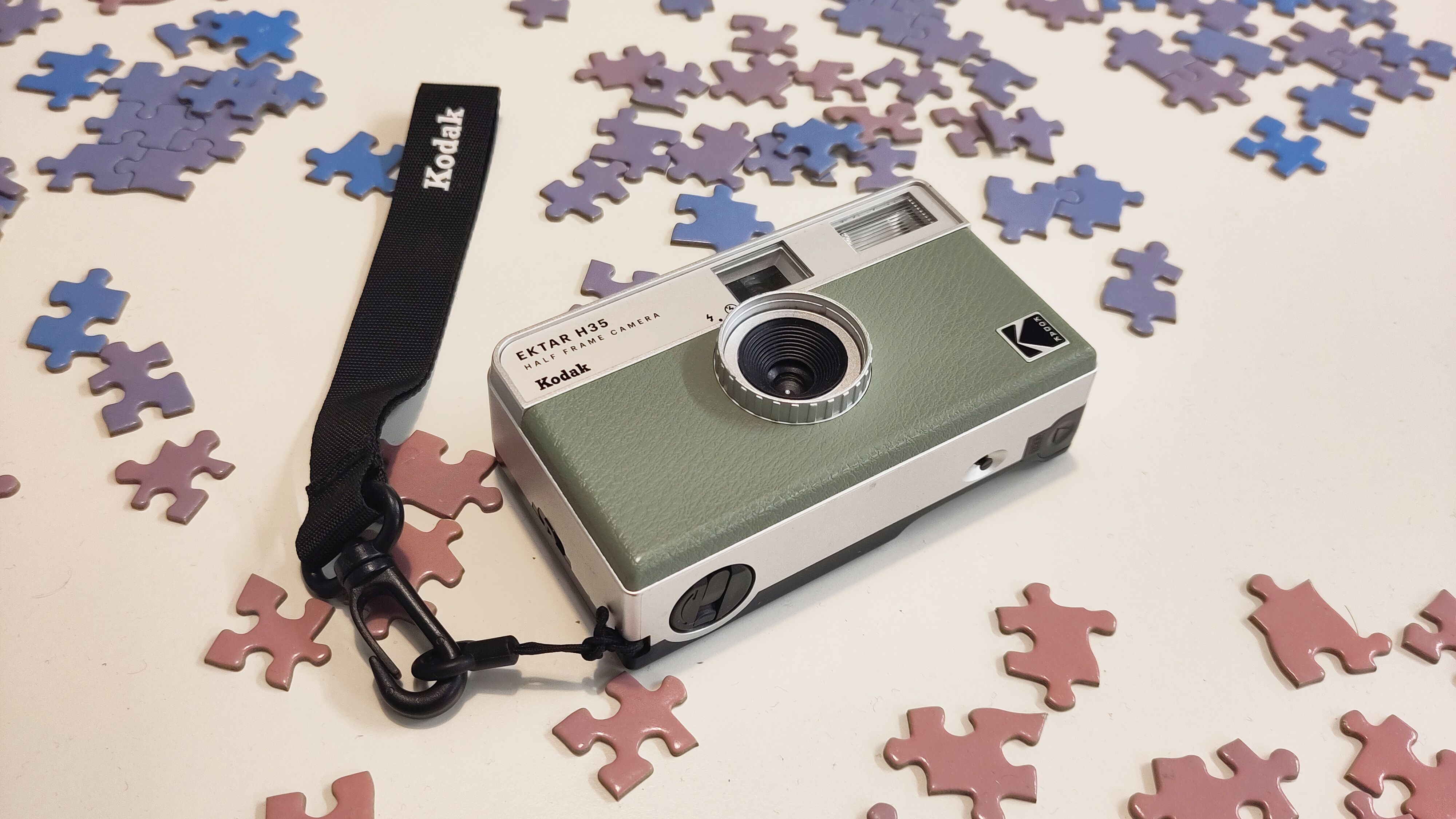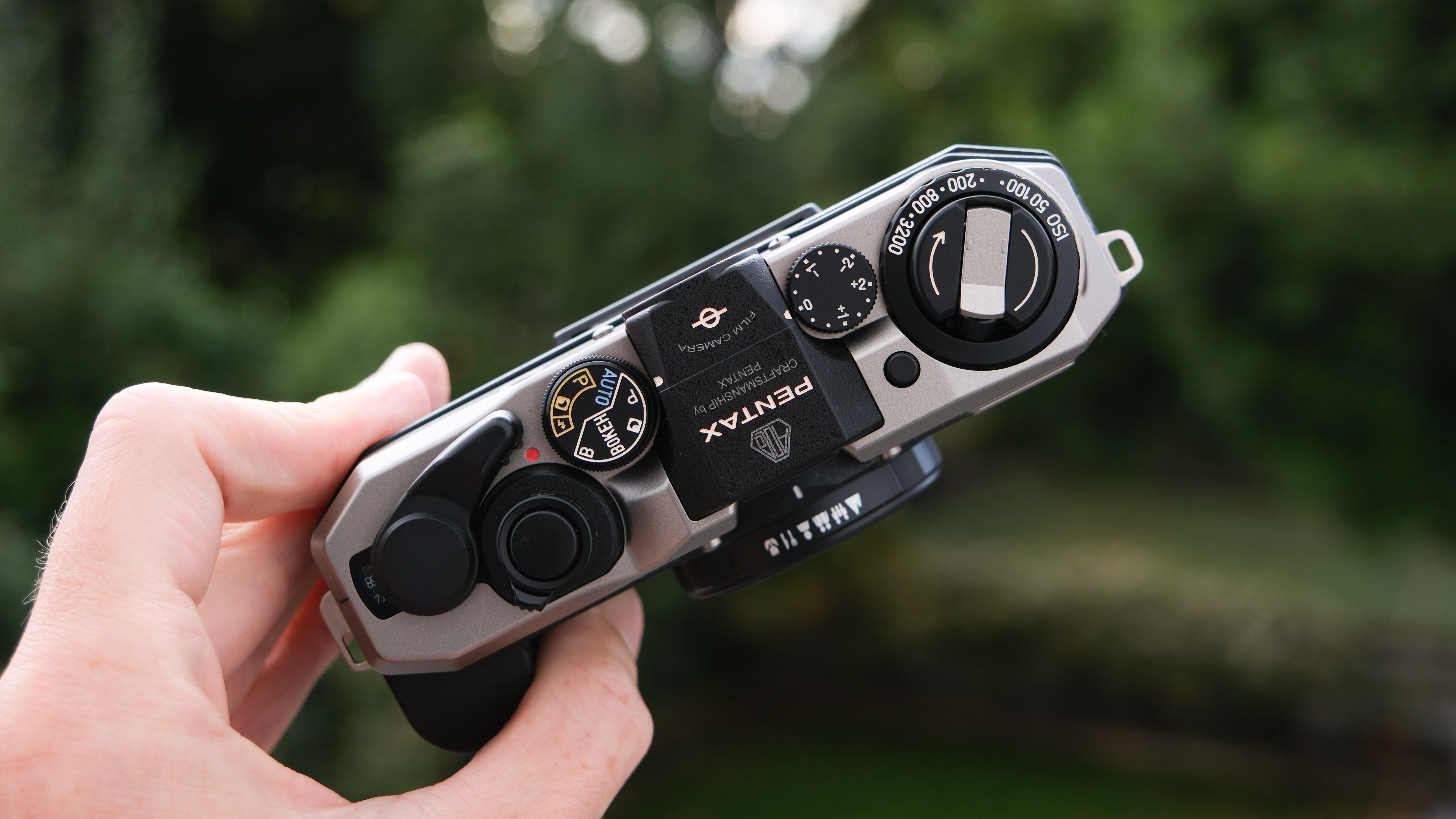
The craving for a retro look is bringing film photography back into the spotlight – and with it a number of new cameras. From the Kodak Ektar H35 to the Pentax 17, a number of these new film cameras introduced to keep up with the retro craze are half-frame cameras. While the half-frame camera has a long history, the resurgence of film has many novices asking a key question: what is a half-frame camera?
A half-frame camera splits the film in half in order to fit two images side-by-side in the space normally occupied by one. That means that a traditional roll of 36 exposure film will instead shoot 72 images. The half-frame camera’s lower cost per image and uniquely vertical aspect ratio is bringing the format back into the limelight.
Here’s what photographers need to know about the half-frame format.
What is a half-frame camera?

A half-frame camera is a film camera that splits the standard 35mm film in half. A traditional 35mm roll of film records the image on a 36mm by 24mm section of film. Half-frame cameras split the frame in half, fitting two images side-by-side instead of one. This results in an image that’s 18 by 24mm instead. A key advantage of half-frame is that photographers can get twice as many shots in a single roll of film, so a 36 exposure roll of film creates 72 images.
During the development process, photographers can choose to leave the images in half frame format, which creates a diptych or two images side-by-side. Or, the images can be trimmed to hold one image on the print or film scan, producing images that look similar to what a full-frame 35mm would produce.
Because half-frame cameras split a traditional photo in half, the aspect ratio or dimensions of the image are different. A traditional 35mm film camera takes a 3:2 horizontal aspect ratio. A half-frame camera, on the other hand, takes an image that has a 3:4 aspect ratio.
The split design on a half frame camera also means that holding the camera horizontally results in vertical images. Photographers can still take horizontal images, but need to hold the camera itself vertically – opposite of a traditional 35mm camera.
Half-frame isn’t a new concept, as the format was also popular in the 1960s. However, the format seems to be particularly suited for photographers shooting film in a digital world. Besides getting more images without buying twice as much film, the aspect ratio of half-frame photos are well-suited for a vertical smartphone screen. Recent half-frame camera launches include the Pentax 17, Alfie Tych+, Kodak Ektar H35, and the Lomography Lomourette.
Does a half-frame camera produce lower quality images than a full frame camera?

While half-frame cameras can take good quality images, there are a few notable differences in the quality of an image shot with half film compared to a traditional 35mm format. Fitting two images instead of one on a single frame will magnify the grain of the film.
That means if you want less grain, you may want to choose a lower ISO film type. Of course, choosing a lower ISO film type means you’ll need to use a slower shutter speed or brighter aperture, so some photographers prefer to just embrace that real film grain.
Because a half-frame photograph takes up less space on the film, the resolution of your film scans will also be lower than those from a full-frame camera.
Full frame cameras, then, typically perform better in low light than a half-frame camera. Full frame cameras also have a tendency to be a bit sharper, but sharpness will vary based on the lens used as well.
What does a half-frame camera do?

A half-frame camera operates much in the same way a traditional 35mm film camera does – except it takes twice as many images per roll of film. A half-frame camera doesn’t “do” anything that a full frame camera doesn’t, unless you really want diptychs, or two photos side-by-side. Instead, half-frame cameras are more about being a more economical way to use film.
Can you use regular film in a half-frame camera?

Half-frame cameras use regular 35mm film, they just expose and wind that film a bit differently. That’s great news, as the 35mm film format is easy to find. That gives photographers many different film emulsions to choose from, whether they want black and white, traditional color, or unique special effect film.
While half-frame cameras use the same film, if you send the film into a lab for development, you’ll want to note that the film is half frame. You can instruct the lab to leave the frames together as diptychs, or separate them and treat them as individual photos.
You may also like
Browse our top picks for the best film cameras or the best 35mm film to load into a half-frame camera.







